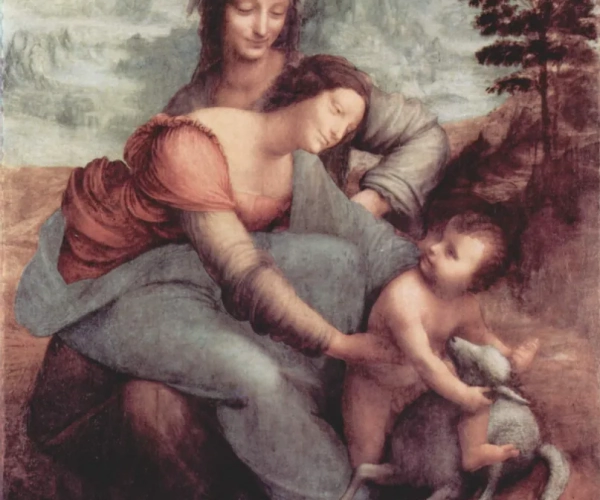The Virgin and Child with St Anne c. 1510
The artwork "The Virgin and Child with St Anne" by Leonardo da Vinci, created around 1510, is an exemplary manifestation of the artist's mastery in depicting complex compositions and conveying profound emotional and spiritual themes. This masterpiece presents the Virgin Mary, the Christ Child, and Mary's mother, St Anne, in a harmonious and dynamic arrangement, reflecting da Vinci's profound understanding of anatomy, gesture, and emotional expression.
One striking aspect of this artwork is the complexity of the interrelationships and interactions between the figures, as Mary and St Anne embrace and support each other, while the Christ Child playfully interacts with both of them. The portrayal of facial expressions and gestures not only conveys the tenderness and affection among the figures but also captures the psychological depth and introspection, characteristic of da Vinci's style.
Furthermore, da Vinci's meticulous attention to detail is evident in the rendering of textures, drapery, and the subtle play of light and shadow, creating a sense of depth and realism. The use of sfumato technique, with its soft transitions and blurred outlines, adds an ethereal quality to the composition, enhancing the spiritual resonance of the subject matter.
Notably, the symmetrical and balanced composition, combined with the exquisite modeling of forms, creates a sense of visual harmony and order, inviting the viewer to contemplate the sacred significance of the familial bond and the divine mystery embodied in the figures of the Virgin and Child with St Anne.
Overall, "The Virgin and Child with St Anne" exemplifies da Vinci's unparalleled technical skill, artistic innovation, and profound sensitivity to the human experience, making it a timeless testament to the enduring legacy of one of the greatest masters of the Italian Renaissance.







No Comments Yet...